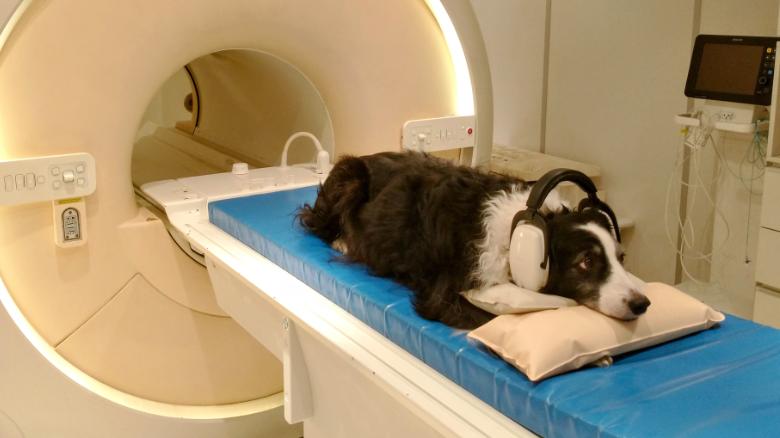It all started when Laura Cuaya decided to move from Mexico to Budapest, Hungary for a promotion. She was now going to be a postdoctoral fellow in animal studies at Eötvös Loránd University. Of course she had to take her border collie, Kun-kun with her. As she had only spoken to Kun-kun in Spanish heretofore, she wondered if the dog was going to get confused by the Hungarian spoken in Budapest. Being a researcher and a curious fellow in general, Laura decided on an experiment.
She gathered five golden retrievers, six border collies, two Australian shepherds, one labradoodle, one cocker spaniel and three dogs of mixed ancestry, all of which were between 3 and 11 years old and had been previously trained to remain still inside an MRI scanner. Of course the group included Kun-Kun. They put headphones on each of the dogs and inside the MRI machine they went. While their brains were being scanned a soft voice spoke to them through the headphones, saying "It is only in the heart that one can see rightly; what is essential is invisible to the eye," first in Spanish, then in Hungarian. Then the same voice started to recite a series of gobbledygook nonsense words.
Two dogs were familiar with Spanish but had never heard Hungarian, 16 were versed in Hungarian but had never heard Spanish. While the words were being spoken the researchers were observing the brain function of each dog. Is there a difference when they hear a familiar language versus one never heard of? What about the gobbledygook, what reaction will they have to that?
The results were unprecedented! Sure enough, the brain scans showed different activity patterns in the primary auditory cortex when nonsense words were spoken than when natural speech occurred. It also showed unique areas of the brain became active when an unknown language was spoken versus when familiar speech was heard. The dogs were able to differentiate between the language they knew and the one they did not and furthermore they reacted with surprise and confusion when the nonsense was spoken.
Attila Andics, head of the department of ethology (the study of animals) at Eötvös Loránd University in Budapest, Hungary said "This is the first nonprimate species for which we could show spontaneous language ability -- the first time we could localize it and see where in the brain this combination of two languages takes place,"
"Each language is characterized by a variety of auditory regularities. Our findings suggest that during their lives with humans, dogs pick up on the auditory regularities of the language they are exposed to," said co-author Raúl Hernández-Pérez, a postdoctoral fellow in the animal research department at Eötvös Loránd University. "This is actually pretty similar to what we see with very young preverbal infants who can differentiate between languages spontaneously before they start to speak," Andics followed.
Now to most readers of this web site will react with "I knew that", and right they would be. Anyone who has ever had a dog can tell you they know what you are saying. However this knowledge disquiet's us as it eventually leads to a path of animal sentience, where animals are more than medium rare steak. Serious scientific research like this bolsters the claims of millions of dog owners and puts those claims on sound scientific footing. Thus expect most mainline news organizations to not cover the story or bury it on page 26.
The desire of humans for animal protein and the favorable taste of dead flesh mark a crossroads where our desires cross point with the realities of the species we consume. Even though most countries do not eat dogs, per example Chinese do. What we most fear is that the argument extends past just dogs to the general animal population. However as the institutional forces are allayed against truth in this instance expect a turbulent road as each animal is slowly thus tested and results thus effectively buried.





